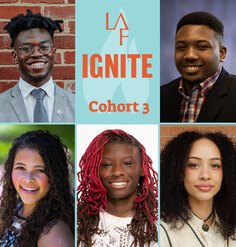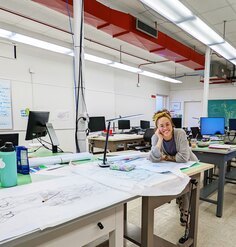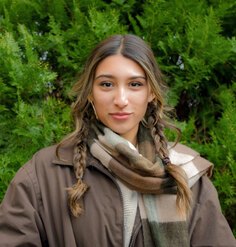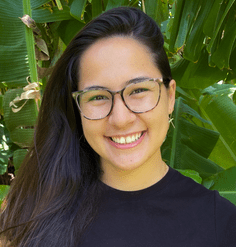Olmsted Scholar Feature: The Los Angeles Riverscape - An Urban Estuary
By Tina Chee, 2012 National Olmsted Scholar Finalist
Urban Rivers. With only concentrated periods of rainfall during limited times of the year in cities such as Los Angeles, how might we reconceive of and reutilize our now concrete and channelized urban rivers with multiplicity as we reconsider issues of lack of open green space and connectivity within post-industrial cities while still providing essential services and responding to environmental and ecological systems? This is the challenge that we must respond to.
This past spring, my studio examined the relationship between landscape and infrastructure, and the potential to transform single-purposed infrastructure into part recreational parkscape, part infrastructural urbanism, part ecological machine, and part water management and flood mitigation engineering. This design proposal seeks to express the state of landscape as a multi-purpose and multi-faceted experiential and infrastructural network; a landscape that creates urban connectivity, that is spatially experiential, that restores our connection to nature in the city, and that creates a multitude of habitat types while serving functional requirements for essential services such as flood mitigation, temporal water detention, and the treatment of urban runoff.
The Los Angeles River is re-envisioned as an urban estuary — the confluence of people and natural systems into a cohesive network that unites neighborhoods and ultimately the entire city. Our connection to nature is re-established by making access to this hidden resource as permeable as feasible, and by creating a network of meandering experiential pathways within the river itself. Neighborhood pocket parks reclaim adjacent vacant parcels along the existing bike path and further integrate the river with its existing fabric. The existing concrete banks are replaced with tiered upper and lower park zones, which create intimate opportunities to inhabit and engage the river edge as well as public spaces to gather along the river bank with protected troughs for vegetation.
A variety of natural habitats are created for land and aquatic life through a cluster of islands and pools of varying elevations and depths that treat water as the living organism above, beneath, and within its surface matter. The islands are part concrete, part porous concrete, part custom concrete block revetment system and serve multiple functions. They direct water into separate channels to create habitat, create opportunities for active and passive recreation, and assist in the mitigation of flood waters. The upper portions are made of open-celled concrete blocks of various sized apertures, which allow vegetation to nest in and can receive rising flood water, temporarily detaining the additional water until the flood water level subsides. The bottom portions are made of porous concrete, and through gravity, the detained water is slowly released to support the surrounding aquatic habitat and serve as additional water supply for the various planted ecotones. Through the development of a three-channel system, rapid, meandering, and placid water velocities further encourage various habitat environments. The three channel system also allows for a variable floodplain, which increases the effective channel width as needed.
The configuration and treatment of urban edges are conceived of as curvilinear and convoluted compressed zones which foster habitat diversity in plant and wildlife. Ecological processes are incorporated to treat urban stormwater runoff through a series of phytoremediation filtration terraces, basins, and runnels. Natural phenomena such as erosion, scouring, and sand deposition are explored as dynamic processes which inform the morphology of a new channel configuration.
The islands, pools, and barrier reefs serve as sculptural armatures which engage these powerful processes and provide the framework that allows nature to re-establish, take hold, and self-evolve in this harsh urban environment while assisting in the redirection and mediation of flood waters during storms. Sand and sediment deposition are encouraged as means of natural succession to this man-made intervention. The design itself evolves beyond its initial framework through the forces of nature.
Methodology
We took a very unique approach to study natural phenomena of water flow, scouring, and sand deposition. These natural processes were physically explored using a 1”=30’ physical model with 2X vertical distortion. Design models were CNC milled and tested with running water at various water flows with ground walnut shells to simulate the effects of water velocity, water scouring, and sand deposition. Colored dye was used to highlight the actual water effects and flow directions. Kayaking speeds were taken as a measure of water velocity. Water depth measurements were taken at various points at the various water velocities. The results of the water tests were recorded, analyzed, and used to further inform the design.
Tina Chee is a MLA candidate at the University of Southern California and will graduate in May 2013. This project was created as part of instructor Alex Robinson’s spring semester studio. This summer, Tina participated in the SWA internship program which focused on the definition and creation of an Eco District in San Francisco. She is currently working on her thesis which will explore strategies that operate at the juncture of landscape, urbanism, architecture, infrastructure, and social programming for re-envisioning the nature of Los Angeles.











